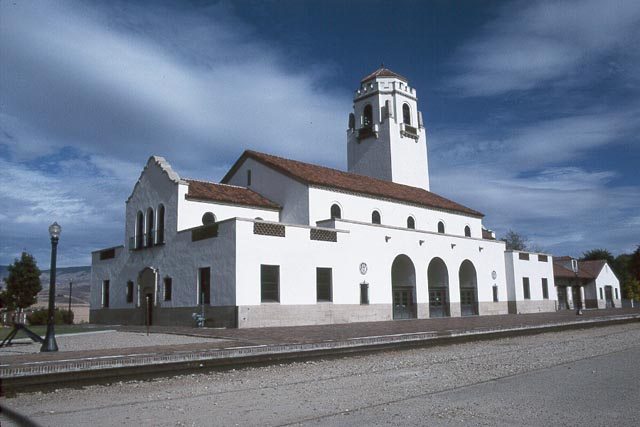The Pioneer connected at various places, Ogden when 5/6 took the Overland Route. SLC after 5/6 were shifted to the D&RGW and ex-WP (SLC to Alazon, outside Wells, NV), and ultimately Denver, when it was shifted back to the Overland Route to restore service to Wyoming and provide better times in Seattle due to a faster route.
It also provided through coaches and sleepers to Chicago for most of its life. There may have been a cross platform transfer at Ogden for a relatively short time in its very early years, like the Desert Wind initially had.
5/6, 25/26, 35/36 were Amtrak's "City of Everywhere".
The cross-platform transfer at Ogden Union Station is how the train was first set up. The
Pioneer was the first Amtrak train into SLC. I believe that arrangement lasted until 1981, when through cars with the
SF Zephyr were introduced. In that era, the train crews east of PDX were UP employees, complete with classic uniforms and the old-time UP "on time or else" enthusiasm.
Amtrak's Marketing department had a draft schedule for the
Columbia River Limited that required an overnight stay in Ogden and the train terminating in Portland instead of Seattle, with economic consequences. Art Lloyd of Amtrak in San Francisco and me (at ODOT) agreed that would be the dog that people in DC thought it should be and we mailed each other our draft ideas. They passed in the mail, and we discovered that they were almost identical. That schedule replaced the weakest of the PDX<>SEA trains, with an extra coach being added on that segment.
Other issues were triggered with the re-route of the Zephyr, both good and bad. SLC Rio Grande / Western Pacific Station was set up for switching three trains and there was room for a fourth (the
National Parks Special?). As KSL radio's booming signal proclaimed, Salt Lake City was for a time on Amtrak the "Crossroads of the West."
Salt Lake City at train time (1991:


A typical station on the
Pioneer route:
 Rail Travel News,
Rail Travel News, three months after the Pioneer began. It took a year to get the Ogden route into the reservation system.































































